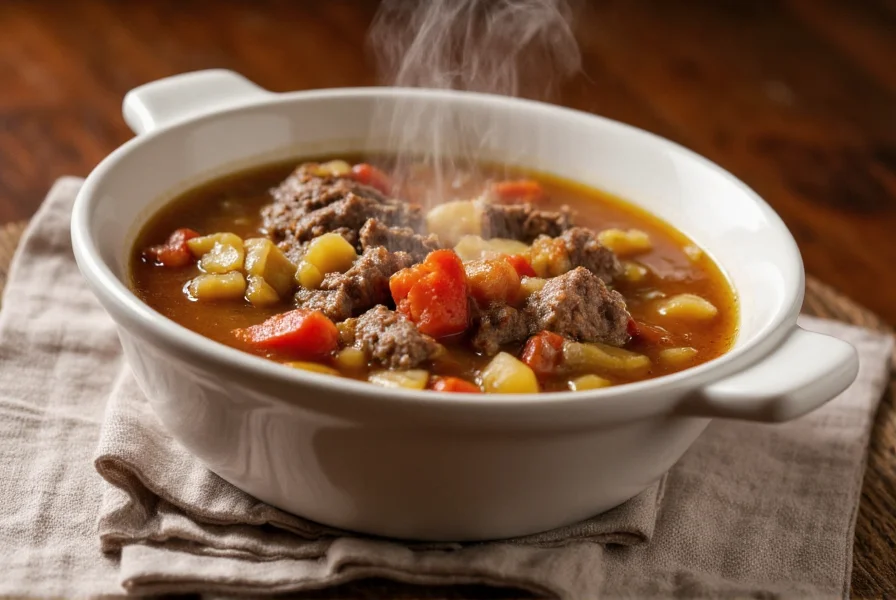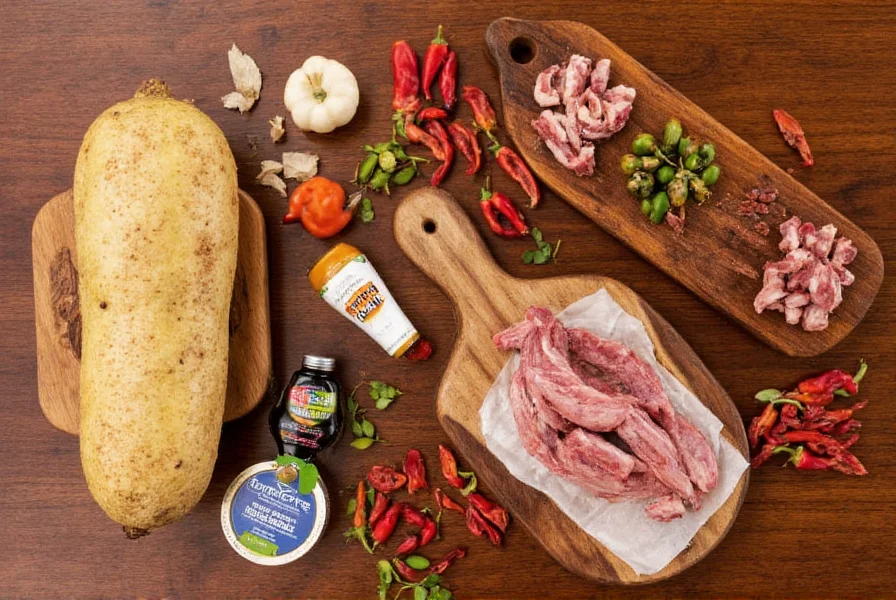Historical Origins of Pepper Pot
The story of pepper pot begins in West Africa, where similar stews were common. Enslaved Africans brought their culinary traditions to the Caribbean, creating a dish called "pepper-pot" that combined indigenous ingredients with African cooking techniques. This original version featured cassava, meats, and the distinctive West Indian “cuisse” pepper.
During the American Revolutionary War, Philadelphia's version gained prominence. According to historical accounts, when General George Washington's troops were starving at Valley Forge in 1777-78, resourceful Philadelphia women created a nourishing stew from available ingredients, including tripe. This Philadelphia pepper pot became a city specialty and remains on menus at historic establishments like The Library Restaurant at The Logan Hotel.
| Pepper Pot Variation | Primary Ingredients | Distinctive Features |
|---|---|---|
| Philadelphia | Beef tripe, beef stock, vegetables, cayenne pepper | Clear broth, spicy kick, often served with sherry |
| Caribbean | Various meats, cassava, cinnamon, hot peppers | Thick, complex broth, often includes crab or conch |
| Modern Interpretations | Alternative meats, vegetable variations | Adapted for contemporary palates while honoring tradition |
Key Ingredients That Define Authentic Pepper Pot
What makes pepper pot distinctive isn't just the ingredients but how they work together. Traditional Philadelphia pepper pot relies on:
- Beef tripe - The essential base that gives the stew its characteristic texture
- Rich beef stock - Provides depth of flavor
- Cayenne pepper - Delivers the signature heat (not black pepper)
- Aromatics - Onions, celery, and carrots form the flavor foundation
- Sherry - Often added when serving for complexity
Caribbean versions typically include more diverse proteins like oxtail, goat, or seafood, along with unique ingredients such as cassava and cinnamon. The West Indian “cuisse” pepper (also called “shot pepper”) provides intense heat that defines the Caribbean style.

Philadelphia Pepper Pot Recipe
Creating an authentic Philadelphia pepper pot requires attention to detail. Here's a traditional approach:
- Clean and parboil 1 pound of beef tripe for 30 minutes, changing water once
- Simmer tripe in 6 cups of beef stock with 1 chopped onion for 2 hours
- Add 2 chopped carrots, 2 chopped celery stalks, and 1 diced potato
- Continue simmering until vegetables are tender (about 30 minutes)
- Stir in 1-2 teaspoons of cayenne pepper (adjust to taste)
- Serve hot with a splash of sherry and crusty bread
For best results, prepare pepper pot a day ahead—the flavors deepen beautifully when allowed to rest. The stew should have a clear but robust broth with tender tripe pieces that offer slight resistance when eaten.
Regional Variations Worth Exploring
While Philadelphia and Caribbean versions dominate the pepper pot landscape, regional interpretations exist throughout the Americas:
- Trinidadian pepper pot - Features cassareep (cassava root extract) and often includes crab or conch
- Guyanese pepper pot - Known for its complex spice blend including cinnamon and cloves
- Modern chef interpretations - Some restaurants substitute oxtail or short ribs for tripe while maintaining the spicy broth concept
Understanding these variations helps appreciate pepper pot as a living culinary tradition rather than a static recipe. Food historians note that the dish's evolution reflects broader patterns of cultural exchange throughout the Atlantic world.

Serving Traditions and Modern Pairings
Traditionally, Philadelphia pepper pot was served as a first course in fine dining establishments throughout the 19th century. The standard serving method includes:
- A small portion (about 8 ounces) in a heated soup plate
- A splash of dry sherry added tableside
- Crusty bread or oyster crackers on the side
Modern pairings might include:
- A crisp lager or pilsner to cut through the richness
- A simple green salad with vinaigrette
- For Caribbean versions, rice and peas provides the traditional accompaniment
When preparing pepper pot at home, remember that the dish's heat level can be adjusted to personal preference. Start with less cayenne and add more as needed—the goal is a warming sensation rather than overwhelming heat.
Frequently Asked Questions
What is the difference between Philadelphia pepper pot and Caribbean pepper pot?
Philadelphia pepper pot is a clear tripe-based soup with a beef broth foundation and cayenne pepper heat. Caribbean pepper pot is typically thicker, often includes cassava and diverse proteins like oxtail or seafood, and features complex spice blends including cinnamon. The Philadelphia version developed from Caribbean culinary traditions but evolved into a distinct regional specialty.
Why is it called pepper pot when it doesn't contain black pepper?
The name comes from the significant amount of cayenne pepper (not black pepper) used in the Philadelphia version. In Caribbean versions, the "pepper" refers to the West Indian "cuisse" pepper or other hot peppers that give the stew its characteristic heat. The "pot" refers to the cooking vessel and the one-pot preparation method.
Can I make pepper pot without tripe?
While traditional Philadelphia pepper pot requires tripe for authenticity, modern adaptations sometimes use oxtail, short ribs, or even mushrooms for vegetarian versions. However, without tripe, it's not technically Philadelphia pepper pot—it would be a different stew inspired by the concept. The unique texture of properly prepared tripe is essential to the traditional experience.
How did pepper pot become associated with Philadelphia?
Philadelphia's connection to pepper pot dates to the Revolutionary War era. Historical accounts suggest that during the harsh winter at Valley Forge (1777-78), resourceful Philadelphia women created this nourishing stew from available ingredients to feed Washington's starving troops. The dish became a city specialty and remained popular through the 19th century as a signature Philadelphia dish.
Is pepper pot the same as oxtail soup?
No, pepper pot and oxtail soup are distinct dishes. Traditional Philadelphia pepper pot features tripe as the primary meat, while oxtail soup uses oxtail as the main ingredient. Caribbean pepper pot sometimes includes oxtail among other proteins, but still differs in spice profile and preparation method. Both are hearty stews, but they have different culinary lineages and characteristic flavors.











 浙公网安备
33010002000092号
浙公网安备
33010002000092号 浙B2-20120091-4
浙B2-20120091-4